Benchmark
- Home
- BACH motors
- Benchmark
Compared to other thermal solutions
- At an energy density of 12.2KWH/Kg, kerosene and diesel burn slowly and gasoline burns fast.
Which favors the rotation regime, has an impact on the size and therefore the weight: hence the
difference in performance, particularly concerning the duration of the flight.
- Ethanol (8.2KWH/Kg) and butanol (10.2KWH/Kg) burn quickly. Ethanol oxidizes aluminum
because it attacks the AL2O3 layer which protects this metal, dissolves certain types of joints, cannot
be put in fiberglass tanks, retains water, etc. Butanol should not have these flaws and future fuels.
- Problems related to the compression ratio of gasoline engines. This is a point that will
differentiate aeronautical engines from engines used on land vehicles. In fact, the most critical
operating point is around the maximum torque speed, and if the air inlet is opened wide, there is a
risk of detonation if the octane number of the fuel used does not match. is not adapted to the
compression ratio of the engine. The solution is to delay the ignition advance, that is to say the
moment when the spark plug gives its spark: ECU and the advantage of our partner's FlexFuel
technology which allows adaptation of the ignition and a rate of superior compression.
- For an engine mounted on an airplane or helicopter, the power demand will always be at a high
engine speed, determined by the power/speed characteristic of the propeller, or the speed range
authorized in flight for helicopters. The stability of the operating regime allows optimization of
consumption, better carburetion and more effective noise reduction: higher compression ratios in
aeronautics, and therefore better efficiency. Automotive engineers tried variable compression
ratios, but the mechanical complexity and general lack of rigidity of the engine block did not allow an
acceptable achievement for a series, let alone in competition.
- The lifespan will depend on the conditions of use. In a charged atmosphere (dust, salt) it is greatly
limited, which is not the case for piston engines with compressors and a regulated intake system.
Type of engine Spec. mass Kg/Kw Conso. spécif. Kg/Kwh PMC 1 2 3 4 5 6 7 8 9 10 11 12 Turbomotor 0.3 0.38 0.7 1.1 1.4 1.8 2.2 2.6 3 3.3 3.7 4.1 4.5 4.9 Diesel piston 1.3 0.2 1.5 1.7 1.9 2.1 2.3 2.5 2.7 2.9 3.1 3.3 3.5 3.7 Fuel piston 1 0.245 1.2 1.5 1.7 2 2.2 2.5 2.7 3 3.2 3.5 3.7 3.9 BACH gasoline 0.36 0.2 0.56 0.76 0.96 1.16 1.36 1.56 1.76 1.96 2.16 2.36 2.56 2.76 Electrical 0.1 5 5.1 10.1 15.1 20.1 25.1 30.1 35.1 40.1 45.1 50.1 55.1 60.1
- A gas turbine does not have the same efficiency at partial load as a piston engine. It is more
expensive than its piston equivalent in use (consumption) and maintenance. But its advantages,
efficiency at maximum load, greater power possibility, become interesting > 800 KW. Hence the
choice of the BACH motor® range: 100 to 800 KW.
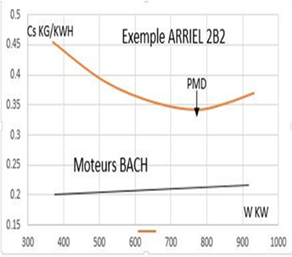
- At an energy density of 12.2KWH/Kg, kerosene and diesel burn slowly and gasoline burns fast. Which favors the rotation regime, has an impact on the size and therefore the weight: hence the difference in performance, particularly concerning the duration of the flight.
- Ethanol (8.2KWH/Kg) and butanol (10.2KWH/Kg) burn quickly. Ethanol oxidizes aluminum because it attacks the AL2O3 layer which protects this metal, dissolves certain types of joints, cannot be put in fiberglass tanks, retains water, etc. Butanol should not have these flaws and future fuels.
- Problems related to the compression ratio of gasoline engines. This is a point that will differentiate aeronautical engines from engines used on land vehicles. In fact, the most critical operating point is around the maximum torque speed, and if the air inlet is opened wide, there is a risk of detonation if the octane number of the fuel used does not match. is not adapted to the compression ratio of the engine. The solution is to delay the ignition advance, that is to say the moment when the spark plug gives its spark: ECU and the advantage of our partner's FlexFuel technology which allows adaptation of the ignition and a rate of superior compression.
- For an engine mounted on an airplane or helicopter, the power demand will always be at a high engine speed, determined by the power/speed characteristic of the propeller, or the speed range authorized in flight for helicopters. The stability of the operating regime allows optimization of consumption, better carburetion and more effective noise reduction: higher compression ratios in aeronautics, and therefore better efficiency. Automotive engineers tried variable compression ratios, but the mechanical complexity and general lack of rigidity of the engine block did not allow an acceptable achievement for a series, let alone in competition.
- The lifespan will depend on the conditions of use. In a charged atmosphere (dust, salt) it is greatly limited, which is not the case for piston engines with compressors and a regulated intake system.
| Type of engine | Spec. mass Kg/Kw | Conso. spécif. Kg/Kwh PMC | 1 | 2 | 3 | 4 | 5 | 6 | 7 | 8 | 9 | 10 | 11 | 12 |
|---|---|---|---|---|---|---|---|---|---|---|---|---|---|---|
| Turbomotor | 0.3 | 0.38 | 0.7 | 1.1 | 1.4 | 1.8 | 2.2 | 2.6 | 3 | 3.3 | 3.7 | 4.1 | 4.5 | 4.9 |
| Diesel piston | 1.3 | 0.2 | 1.5 | 1.7 | 1.9 | 2.1 | 2.3 | 2.5 | 2.7 | 2.9 | 3.1 | 3.3 | 3.5 | 3.7 |
| Fuel piston | 1 | 0.245 | 1.2 | 1.5 | 1.7 | 2 | 2.2 | 2.5 | 2.7 | 3 | 3.2 | 3.5 | 3.7 | 3.9 |
| BACH gasoline | 0.36 | 0.2 | 0.56 | 0.76 | 0.96 | 1.16 | 1.36 | 1.56 | 1.76 | 1.96 | 2.16 | 2.36 | 2.56 | 2.76 |
| Electrical | 0.1 | 5 | 5.1 | 10.1 | 15.1 | 20.1 | 25.1 | 30.1 | 35.1 | 40.1 | 45.1 | 50.1 | 55.1 | 60.1 |
- A gas turbine does not have the same efficiency at partial load as a piston engine. It is more expensive than its piston equivalent in use (consumption) and maintenance. But its advantages, efficiency at maximum load, greater power possibility, become interesting > 800 KW. Hence the choice of the BACH motor® range: 100 to 800 KW.

Compared to other electrical solutions
- Energy density 0.2KWH/Kg in 2022, slow progression (x 2 in 14 years) – 250 Wh/Kg perhaps 500
within 5 years if thermal outbursts, emulsion phenomena, recharge times and increased number of
useful cycles. 1 KW/Kg (equivalent to bad thermal) in 15 years? While BMW already reaches 1.2
KW/Kg with Biofuel.
- Current electric motors weigh 0.1 Kg/KW. The batteries are at 0.2KWH/Kg (i.e. 5 Kg/KW). For a
flight of 2 hours per KW, a mass of 10.1 Kg/KW (0.1 Kg + 2*5 Kg/KWH) is required. To compare to the
BACH motor 0.76 Kg/KW (0.36 Kg + 2*0.2 Kg/KWH).
- New technologies in development (Li-S – Li-Air-Na-ion… solid electrolyte batteries). Being
developed for aerospace applications, they have higher energy density potential than current
lithium-ion batteries, with improved safety and longer life. Solid-state batteries also have the
potential to address the operational safety issues of lithium-ion batteries, eliminating their fire or
explosion risks.
- However, despite their potential, solid-state battery technologies are still in the research and
development stage, and it will still be some time before these batteries can be used in aircraft for
autonomy > 80 minutes.
- It will remain to increase the number of cycles and reduce the duration of charges at the risk of
penalizing the potential use and availability; as well as taking into account the impact of the
temperature delta penalizing for the batteries.
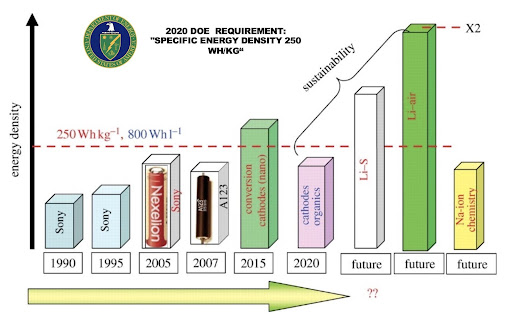 The BACH motor® can be an ideal solution as a hybrid thermal-electric GMP generator. Combining the best of both worlds and gaining efficiency, environmental impact, safety, and noise reduction.
The BACH motor® can be an ideal solution as a hybrid thermal-electric GMP generator. Combining the best of both worlds and gaining efficiency, environmental impact, safety, and noise reduction.
BACH motor® : The weight of a turbine, the efficiency of a diesel engine, the performance of a gasoline engine... ideal for a hybrid thermal-electric GMP.
- Energy density 0.2KWH/Kg in 2022, slow progression (x 2 in 14 years) – 250 Wh/Kg perhaps 500 within 5 years if thermal outbursts, emulsion phenomena, recharge times and increased number of useful cycles. 1 KW/Kg (equivalent to bad thermal) in 15 years? While BMW already reaches 1.2 KW/Kg with Biofuel.
- Current electric motors weigh 0.1 Kg/KW. The batteries are at 0.2KWH/Kg (i.e. 5 Kg/KW). For a flight of 2 hours per KW, a mass of 10.1 Kg/KW (0.1 Kg + 2*5 Kg/KWH) is required. To compare to the BACH motor 0.76 Kg/KW (0.36 Kg + 2*0.2 Kg/KWH).
- New technologies in development (Li-S – Li-Air-Na-ion… solid electrolyte batteries). Being developed for aerospace applications, they have higher energy density potential than current lithium-ion batteries, with improved safety and longer life. Solid-state batteries also have the potential to address the operational safety issues of lithium-ion batteries, eliminating their fire or explosion risks.
- However, despite their potential, solid-state battery technologies are still in the research and development stage, and it will still be some time before these batteries can be used in aircraft for autonomy > 80 minutes.
- It will remain to increase the number of cycles and reduce the duration of charges at the risk of penalizing the potential use and availability; as well as taking into account the impact of the temperature delta penalizing for the batteries.

The BACH motor® can be an ideal solution as a hybrid thermal-electric GMP generator. Combining the best of both worlds and gaining efficiency, environmental impact, safety, and noise reduction.
BACH motor® : The weight of a turbine, the efficiency of a diesel engine, the performance of a gasoline engine... ideal for a hybrid thermal-electric GMP.
Performance Challenge
What are the technological points of the Bach engine that create this significant difference in performance?
Manufacturing: Using the best metal additive manufacturing technologies and materials that have
proven themselves in motor racing at the highest level. Optimized shape and weight. Weight/power
ratio. Integration of a latest generation miniaturized fuel quality sensor (infrared molecular structure
analysis) allowing the engine to always operate optimally based on the fuel quality information
provided in real time by the sensor. Allows the engine to adapt to synthetic and renewable fuels with co-optimization guaranteeing
optimized performance without penalizing the safety of operation and engine components.
Technology developed in France and covered by more than 95 patents issued in 16 countries and
included in a portfolio of 11 patent families. The marketing of this solution allows the BACH engine
to be at least 5 to 7 years ahead of an engine that would be developed by a competitor, not
benefiting from on-board analysis. Recognized know-how of SP3H Continuously optimized operation: from spectrometric detection of
the fuel molecule to continuous adjustment of air intake, injection and ignition via a SYLKAN data
bus, algorithms and a FADEC + specific ECU “On condition” preventive maintenance: via sensors, a
torque meter and a patented spark plug control system limiting assembly/disassembly. 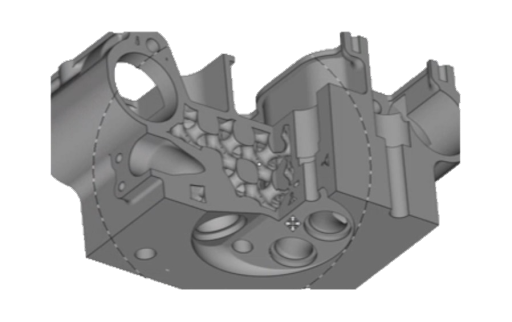
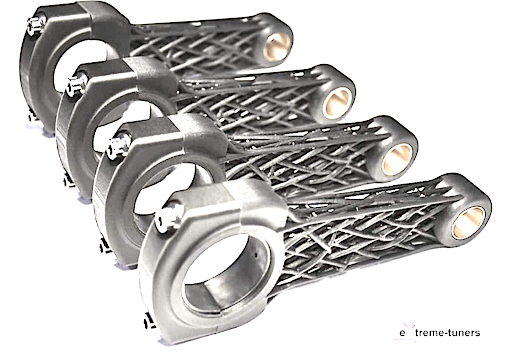
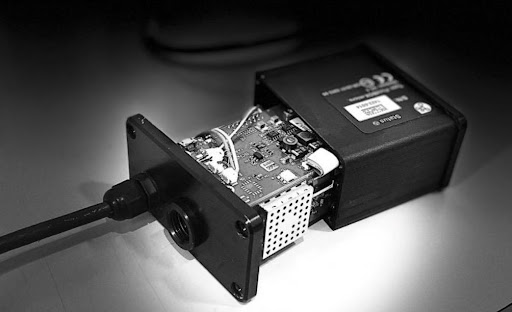
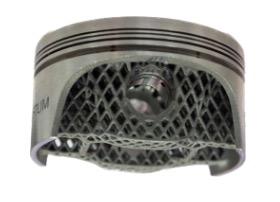
Consortium of entities to develop a high-performance thermal engine in terms of specific power and
volume running on synthetic aircraft fuel.




Consortium of entities to develop a high-performance thermal engine in terms of specific power and volume running on synthetic aircraft fuel.
BACH Industries
Bach Industries is fully committing to his customer to offer the best answer to his own needs.



